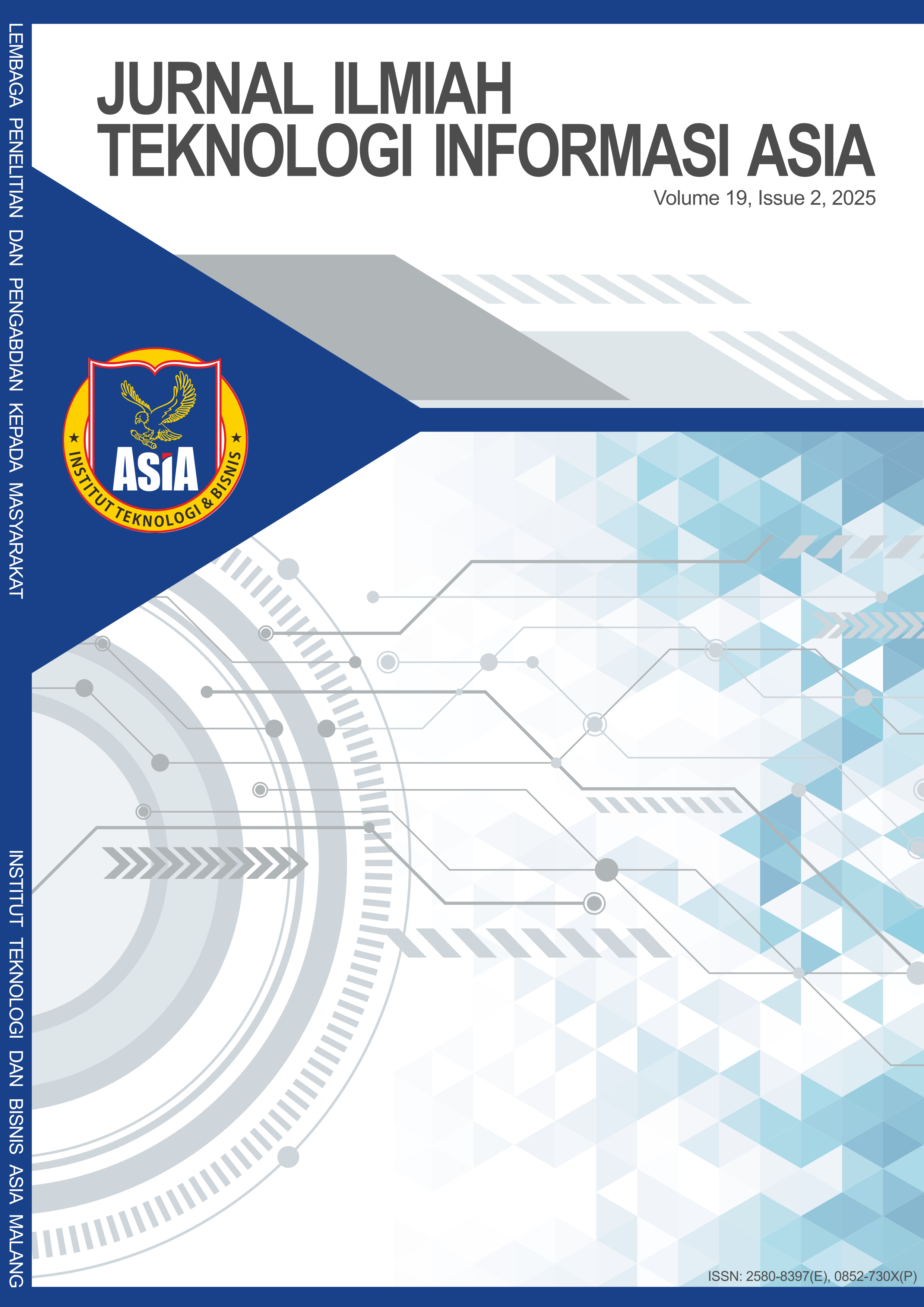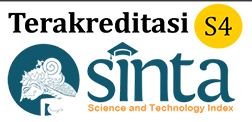Implementation of the YOLOv5 Algorithm on an Android Platform for counting catfish fry (clarias sp.)
DOI:
https://doi.org/10.32815/jitika.v19i2.1184Keywords:
android, catfish fry, image processing, object detection, yolov5Abstract
Catfish aquaculture in Indonesia faces an efficiency challenge in its fry counting process, which still relies on manual methods. This research aims to develop and evaluate a mobile application based on the Android operating system that implements the YOLOv5 algorithm for the automated, real-time detection and counting of catfish fry. The model was trained using an image dataset from Roboflow and integrated into an application developed with the Flutter framework. The model's performance was quantitatively assessed using Precision, Recall, and F1-Score metrics across three scenarios: normal, clustered (occlusion), and shadowed conditions. The test results show that the best performance was achieved under normal conditions, with an F1-Score of 0.949. Performance decreased when the fry was clustered (F1-Score of 0.874) due to object occlusion, and also under shadowed conditions (F1-Score of 0.786) because of false positive detections. These findings confirm the suitability of YOLOv5 for fry counting applications on mobile devices while also highlighting critical areas for improvement, particularly in handling lighting variations and overlapping objects.
Downloads
References
Arganata, A. R., Rasmana, S. T., & Kusumawati, W. I. (2020). Analisis Perhitungan Bibit Ikan Gurame Menggunakan Webcam dengan Metode Yolo (You Only Look Once). https://repository.dinamika.ac.id/id/eprint/5195/
Armalivia, S., Zainuddin, M. S., & MT., P. D. I. A. (2021). Penghitungan Otomatis Larva Udang Menggunakan Metode Yolo. https://repository.unhas.ac.id/id/eprint/12479/
Badgujar, C. M., Poulose, A., & Gan, H. (2024). Agricultural Object Detection with You Look Only Once (YOLO) Algorithm: A Bibliometric and Systematic Literature Review. ArXiv. https://doi.org/10.48550/arXiv.2401.10379
Dendi, A. S., & Sunardi, S. (2021). Alat Penghitung Benih Ikan Lele Menggunakan Pengolahan Citra. http://repository.polman-babel.ac.id/id/eprint/350/
Putra, W. S. E. (2016). Klasifikasi Citra Menggunakan Convolutional Neural Network (CNN) pada Caltech 101. Jurnal Teknik ITS, 5(1). https://doi.org/10.12962/j23373539.v5i1.15696
Fauziyah, N., Nirmala, K., Supriyono, E., & Hadiroseyani, Y. (2019). Evaluasi Sistem Budidaya Lele: Aspek Produksi dan Strategi Pengembangannya (Studi Kasus: Pembudidaya Lele Kabupaten Tangerang). Jurnal Kebijakan Sosial Ekonomi Kelautan Dan Perikanan, 9(2), 129. https://doi.org/10.15578/jksekp.v9i2.7764
Ilahiyah, S., & Nilogiri, A. (2018). Implementasi Deep Learning Pada Identifikasi Jenis Tumbuhan Berdasarkan Citra Daun Menggunakan Convolutional Neural Network. JUSTINDO (Jurnal Sistem dan Teknologi Informasi Indonesia), 3(2), 49–56. https://doi.org/10.32528/justindo.v3i2.2254
Ciptawati, E., Budi Rachman, I., Oktiyani Rusdi, H., & Alvionita, M. (2021). Analisis Perbandingan Proses Pengolahan Ikan Lele terhadap Kadar Nutrisinya. IJCA (Indonesian Journal of Chemical Analysis), 4(1), 40–46. https://doi.org/10.20885/ijca.vol4.iss1.art5
Sitio, M. H. F., Jubaedah, D., & Syaifudin, M. (2017). Kelangsungan Hidup dan Pertumbuhan Benih Ikan Lele (Clarias sp.) Pada Salinitas Media yang Berbeda. Jurnal Akuakultur Rawa Indonesia, 5(1), 83–96. https://doi.org/10.36706/jari.v5i1.5810
Sulistiyanti, S., Setyawan, F. A., & Komarudin, M. (2016). Pengolahan Citra Dasar dan Contoh Penerapannya. Teknosain. https://www.researchgate.net/profile/Muhamad-Komarudin/publication/337928062_PENGOLAHAN_CITRA_DASAR_DAN_CONTOH_PENERAPANNYA/links/67f71aa495231d5ba5bd8e5f/PENGOLAHAN-CITRA-DASAR-DAN-CONTOH-PENERAPANNYA.pdf
Yumna, A. S., Rukmono, D., Panjaitan, A. S., & Mulyono, M. (2019). Penigkatan Produktifitas Ikan Lele (Clarias sp.) Sistem Bioflok Di Pesantren Modern Darul Ma’arif Legok, Indramayu. Jurnal Kelautan Dan Perikanan Terapan (JKPT), 2(2), 113. https://doi.org/10.15578/jkpt.v2i2.8080
Additional Files
Published
How to Cite
Issue
Section
License
Copyright (c) 2025 Jurnal Ilmiah Teknologi Informasi Asia

This work is licensed under a Creative Commons Attribution 4.0 International License.
Upon acceptance for publication, authors transfer copyright of their article to Jurnal Ilmiah Teknologi Informasi Asia. This includes the rights to reproduce, transmit, and translate the material in any form or medium.
While the editorial board endeavors to ensure accuracy, they accept no responsibility for the content of articles or advertisements. Liability rests solely with the respective authors and advertisers.
Website material is licensed under a Creative Commons Attribution 4.0 International License (CC BY 4.0). Under this license, users are free to share and adapt the material for any purpose, including commercial use, provided license terms are met. These freedoms are irrevocable by the licensor under such conditions.














